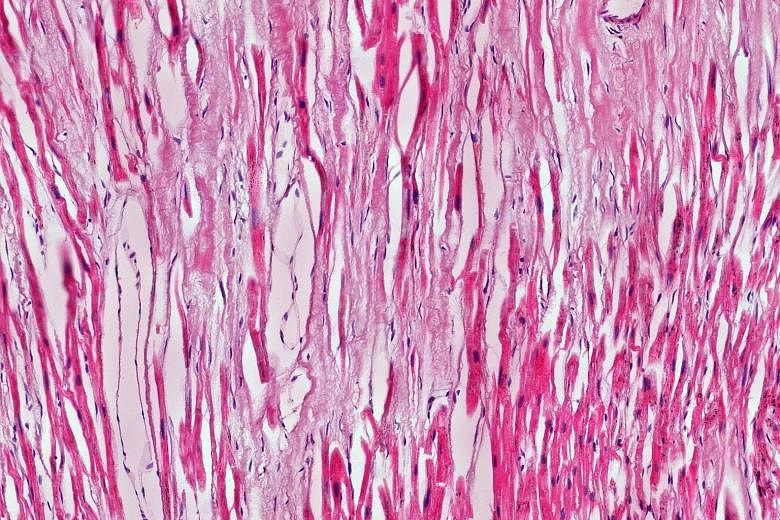Researchers have developed a coherent map of genes in the heart and looked at how they may cause heart diseases, which could pave the way for new treatments for these illnesses.
Heart diseases are a complex set of diseases influenced by different genes, and it is challenging to understand which genes are responsible for a particular disease, say experts.
To help scientists unravel the complex web of genes and how they interact, researchers from the National University of Singapore Yong Loo Lin School of Medicine (NUS Medicine) and the National University Hospital created what they said is the first map of the heart's genes and the "switches" between them that control how the genes behave and contribute to heart diseases.
Genes code for specific traits, and the switches are the non-coding portions of DNA between the genes.
Each gene has more than one switch and the switches may be far away from the genes that they control, making it tricky for scientists to match the switches to the genes.
The genetic heart map locates the genes and their switches so that scientists can eventually study them to create targeted treatments, such as gene therapy.
"If we understand how these genes are controlled, then we may find ways to control heart failure itself... and identify new disease-causing genes," said Professor Roger Foo from the university's department of medicine, who led the research team.
Heart diseases, which eventually lead to heart failure, cause one-third of all deaths in Singapore annually.
The researchers are part of the Cardiovascular Disease Translational Research Programme, one of nine new strategic research focus areas that were established at NUS Medicine in July.
The new focus areas, which also include infectious diseases, healthy longevity and precision medicine, aim to create greater synergy and collaboration between basic and clinical scientists within the National University Health System, and to deliver research outcomes that address current clinical and national healthcare issues.
Professor Chng Wee Joo, vice-dean of research at NUS Medicine, said: "We hope that these nine programmes will deliver not just outstanding research, but over the next five to 10 years, make some real impact on how we treat our patients and on the population's health."
The development of the gene map was published as two companion publications in the journals Circulation Research and Circulation last month and this month respectively.
The map took about five years to develop, and the researchers studied tissues from 36 healthy hearts and 34 failing hearts to map out the genes and switches.
Prof Foo said some scientists from Singapore and abroad have reached out to them to find out more about various genes from the map.
He also noted that none of the drugs currently used in treating heart disease targets genes, and cardiovascular research is not as well funded compared with other health conditions.
"The place where a lot of gene targeting is happening, I feel, is in cancer. Looking at the progress that cancer treatment has seen in recent years with targeted therapy, this is our dream for cardiovascular disease also, now that we have mapped out all these specific processes," he added.


